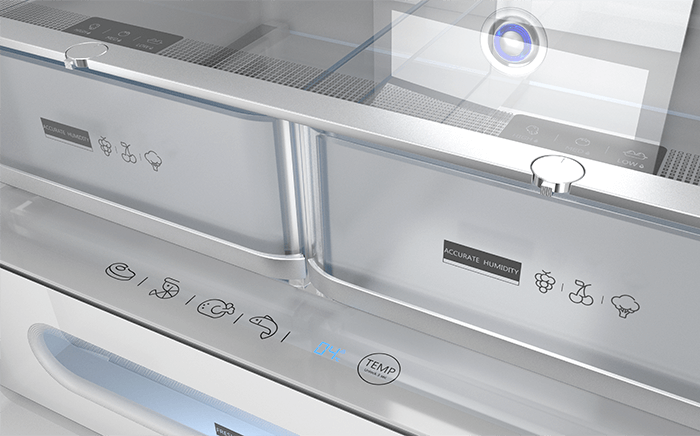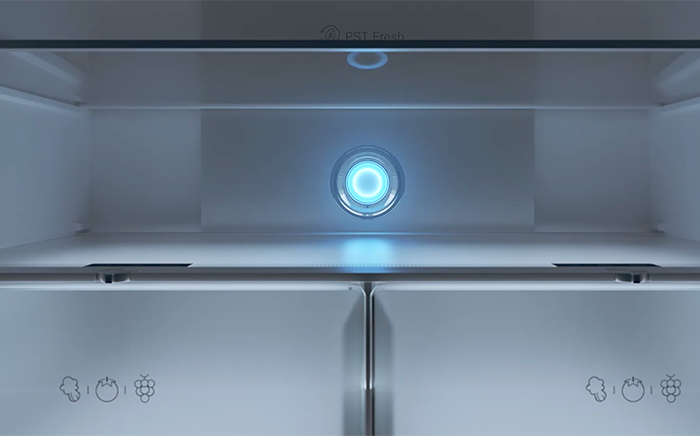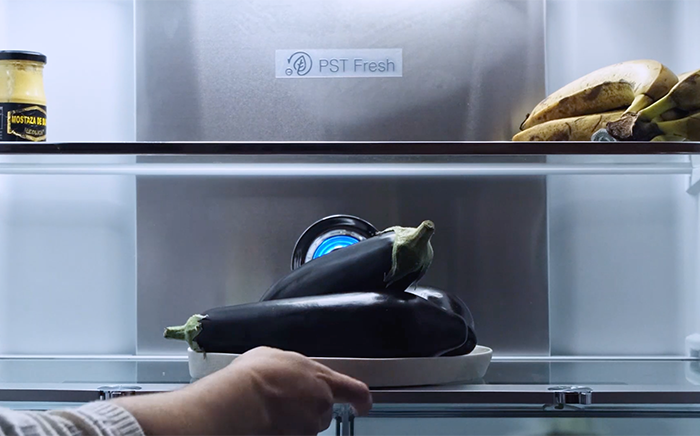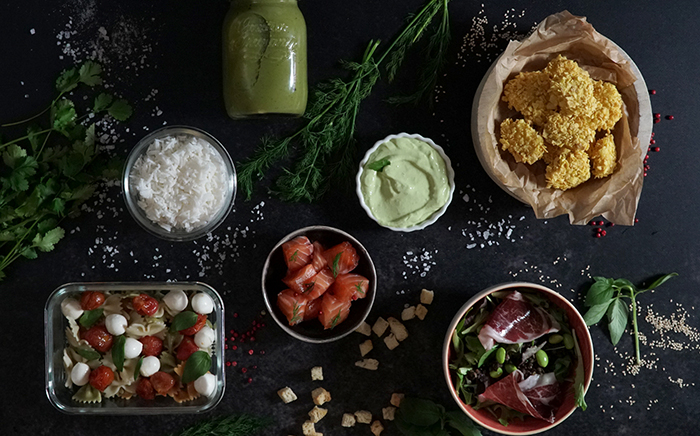On days like these, making the most of our resources is a necessity. Making our food last longer in the fridge is important at this time and always, so as not to waste resources and follow the premise that has been repeated so often at home, “we don’t throw food away”. In addition, we must try to leave the house as little as possible for a common and particular good, so by making a purchase for the whole week, not for three months, we help our community and those we love the most.
The truth is that by following some basic guidelines we can make good use of every food we have in the fridge. All it takes is a little planning and, above all, taking advantage of an appliance that is so important for our home.
A first look at our fridge
Usually, any fridge is organised in order of immediacy. That means, those foods that are used most frequently are located closest to the outside, while those that are used less frequently are piled up behind and are in danger of spoiling without being completely used.
Whether you live alone or with more people, try to keep an order in this appliance so that food less insight is not forgotten and therefore inexorably subject to spoil. Placing the largest or tallest foods at the end of the shelves can be a solution as you will see all of them at first glance.
The importance of cleanliness

This is one of the most necessary and often overlooked guidelines. Maintaining hygiene and cleanliness in our fridge will help it to work at full capacity and extend its useful life. Although the most modern fridges already save us a lot of time in this task thanks to the innovation that we know comes with them, you should keep the outside and inside of your fridge clean due to the daily use of the appliance.
Thorough cleaning
It is important to perform a thorough cleaning from time to time. Unplug the fridge to save energy while cleaning the inside more thoroughly. Make sure you clean the dust from the back of the fridge, carefully. In the case of the freezer, remove any leftover food. Also, clean the door seals to remove dust and dirt. It is very important that you also clean the rubber seals so that they continue to work as intended. Always use non-abrasive products so as not to damage the fridge.
Maintenance cleaning
Drawers, shelves… often accumulate the remains of food and even liquids that may have been spilt. It is important for the hygiene of our food and for the proper functioning of the fridge that we have a routine of cleaning these elements. Do not be afraid to remove them for cleaning, always following the manufacturer’s recommendations.
Innovation for your day to day

Many modern fridges include anti-bacterial systems that also neutralise bad odours. Even the increasingly efficient non-frost systems have put an end to the nightmare of cleaning a freezer that looked like Antarctica on Amundsen’s expedition.
Food leftovers and precooked food
Whether you’re storing the day’s leftovers or cooking in advance, it’s important to store these foods in the right way. You only have to follow a few basic steps:
Right temperature
Don’t put food in the fridge immediately after cooking it, you will force your fridge to over-exert itself and other foods may be damaged. It needs to be at least warm, but don’t let it sit for hours in storage either. Two hours after cooking is an adequate average time for refrigeration.

You can speed up this process by dividing the food into several smaller containers. The smaller the portions are, the faster it will cool down.
Containers and packaging
Whether it’s leftover from delicious dinners or you’ve cooked for the rest of the week, you need to store it properly if you want it to last longer. Use airtight bags or containers, preferably glass ones, with lids. You will preserve it and the smell or taste of the food will not contaminate other foods, as well as possible bacteria. Wrapping the food in protective plastic or putting it in a container will also make it last longer because it is not in direct contact with the air.
Despite all of this, this type of food should be consumed within a maximum of three days, four at the most depending on the type of stew. Even if you do not notice from the smell or taste that they are bad, it is likely that it is no longer healthy to eat them. Plan well when to eat it and give in to your cravings a little: perhaps the cream of spinach you cooked two days ago will not seduce you too much to eat today but make a small effort, which is not bad at all.
On which shelf should I store each food?

The spaces inside our fridge are designed to keep the food in the best conditions and to make the food last longer. But we have to wire them up to work efficiently. Regulate the temperature according to the instructions and prepare to place each type of food according to some basic recommendations:
If you look closely, many of the compartments and drawers in your fridge have pictures indicating which foods are best suited for storage in those areas. However, there are some common guidelines that can help you make the most of every corner to keep your food fresh these days:
Middle and top shelves
Generally, we place here the foods that require less cold, but also those that need a constant temperature, curiously, like the cooked leftovers we mentioned. Yoghurts, other dairy products, jams, etc. must be placed on these shelves.
Low shelves
Meat and fish, as well as cold cuts, find their best conservation area here, and as we all know that great human invention, cheese.
Lower drawers

Since we were little we have seen the vegetable and fruit drawer in the bottom of the fridges, and it is not by chance. It is the coldest part and where fresh food of this kind is best preserved. Modern fridges include systems that prolong the life of these foods by improving the humidity conditions and better preserving their taste and nutrients.
Given the current situation in which we find ourselves, we recommend that you wash the fruit and vegetables before consumption. First, wash your hands with soap before handling the food. In the case of vegetables and fruit, wash the leaves, fruit, etc. under the tap. If you choose to leave the pieces to soak, it is necessary to rinse them afterwards. It is often better to be conscientious than to use disinfectants.
Doors
Door shelves are useful for those foods that need less temperature inside their fridge. Beverages or eggs, butter, open pickles or similar hold up perfectly in this area without a problem.
Every step is important so that food is not wasted
When you are at the market or supermarket, remember to look carefully at the expiration date of the food. This will give you an indication of when it is best to eat it.
Try to plan as much as possible what you will eat for lunch and dinner each day. It doesn’t mean you have to follow it to at or can’t skip it sometime. But it will help you make the most of what you have bought and your pocket, as well as the planet, will appreciate it.

Get in the habit of making a shopping list that you can fill in whenever you miss something. You’ll save money and time, without having to go out unnecessarily to do your own shopping.
Small tips that we can apply to this state of exception but that we must always take into account for responsible consumption. Getting used to following these guidelines so that food lasts longer will not cost us much and we will be doing the planet and our home a favour.

